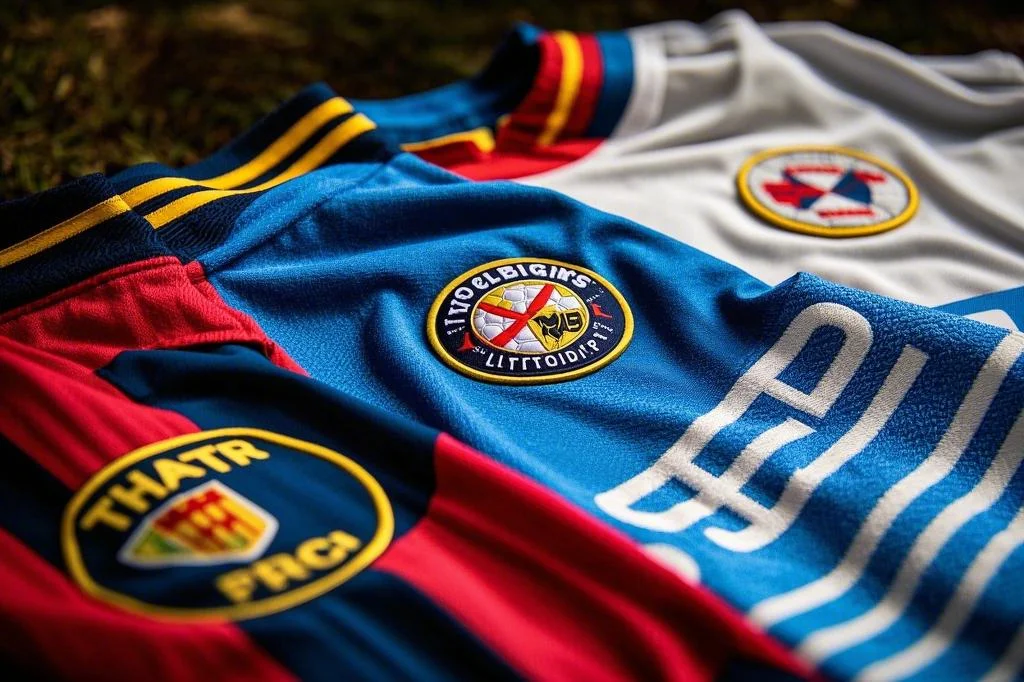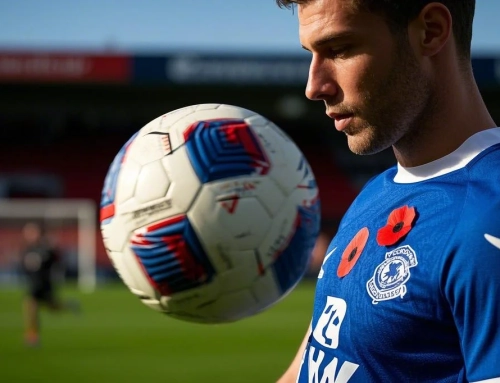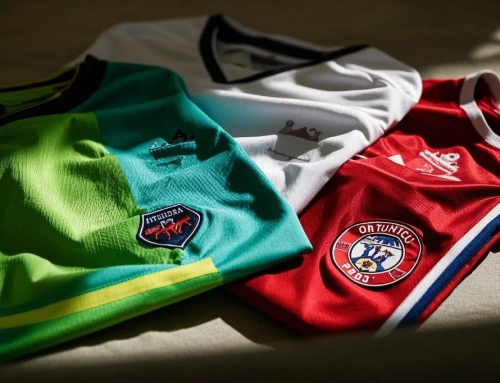
Sustainable Sportswear: A Deep Dive into Manufacturing and Practice
Key Features of the Sportswear
The manufacturer prides itself on incorporating unique features in their apparel to meet the diverse needs of athletes. Some of the standout features include:
- Custom Designs: Athletes can personalize their gear with custom designs that reflect their style and identity.
- Sustainable Materials: The manufacturer prioritizes sustainability by using eco-friendly materials in their production process, reducing environmental impact.
- Club Solutions: Offering club solutions for teams, the manufacturer ensures uniformity and quality across the board.
Emphasizing quality, innovation, and sustainability, the manufacturer’s commitment to ethical practices and efficient business solutions sets them apart in the sportswear industry.
”
Manufacturer’s Approach to Club Solutions and Custom Designs
When it comes to club solutions and custom designs, the manufacturer takes a meticulous approach to ensure that each team’s identity and style are accurately reflected in their apparel. The process of creating custom designs involves collaboration between the manufacturer’s design team and the club representatives to bring the vision to life.
Custom Design Process
The custom design process begins with a consultation where the club’s requirements and preferences are discussed. This includes the incorporation of logos, team colors, and any specific design elements unique to the club. The manufacturer’s design team then creates digital mock-ups for approval before moving into production.
Types of Customization Offered
The manufacturer offers a range of customization options to clubs, including the placement of logos, team names, player numbers, and sponsor logos on the apparel. Clubs can also choose from a variety of font styles and colors to further personalize their uniforms.
Scale and Feasibility of Club Orders
Whether it’s a small local team or a large professional club, the manufacturer can accommodate orders of varying scales. From youth teams to elite clubs, the manufacturing process is flexible to meet the specific needs of each client. The company’s efficient production line allows for timely delivery without compromising on quality.
”
Manufacturer’s Commitment to Sustainable and Ethical Practices
One of the core values of the manufacturer is their unwavering commitment to sustainable and ethical practices in every aspect of their operations. From the materials they use to their waste reduction initiatives, sustainability is at the forefront of their business model.
Sustainable Materials
When it comes to materials, the manufacturer prioritizes the use of eco-friendly and sustainable options. They have invested in research and development to identify innovative fabrics that have minimal environmental impact. Examples of sustainable materials utilized in their apparel include organic cotton, recycled polyester, and bamboo fabric.
Ethical Sourcing Policies
The manufacturer’s ethical sourcing policies are designed to ensure that their supply chain upholds the highest standards of social and environmental responsibility. They work closely with their suppliers to guarantee fair labor practices, safe working conditions, and compliance with international labor laws. Moreover, the manufacturer holds various certifications and audits to validate their commitment to ethical sourcing.
Waste Reduction and Recycling Initiatives
In their efforts to minimize waste and promote recycling, the manufacturer has implemented comprehensive waste reduction strategies throughout their production process. They actively seek ways to reduce excess material usage, optimize production efficiency, and encourage recycling of leftover fabric scraps. By adopting a circular economy approach, the manufacturer aims to close the loop on textile waste and contribute to a more sustainable industry.
”
Jersey Usage Across Professional Sports Teams
When it comes to professional sports teams, the usage of jerseys can vary significantly based on several factors. One key aspect that influences jersey usage is the need for multiple jerseys per game, which is driven by reasons such as hygiene and sponsorship requirements.
Reasons for Multiple Jerseys Per Game
Professional sports teams often have multiple jerseys per game to ensure proper hygiene and to meet sponsorship obligations. Players sweat profusely during games, necessitating fresh jerseys to maintain cleanliness and comfort throughout the match. Additionally, sponsors may require teams to wear different jerseys showcasing their logos, leading to the use of multiple designs in a single game.
Prevalence of Jersey Reuse
Despite the need for multiple jerseys, many professional sports teams opt to reuse jerseys to reduce costs and promote environmental sustainability. Reusing jerseys not only helps teams save on expenses related to purchasing new uniforms but also contributes to minimizing the environmental impact of excessive textile waste.
Differences Across Leagues and Team Sizes
The approach to jersey usage can vary across different leagues and team sizes. While top-tier teams in major leagues may have the means to provide fresh jerseys for every game, smaller or lower-budget teams may prioritize jersey reuse to manage costs effectively. Similarly, the prevalence of jersey reuse practices can differ between sports leagues based on their respective regulations and financial capabilities.
”
Innovative Technologies and Materials in Sportswear
When it comes to sportswear, innovation plays a crucial role in enhancing performance and comfort for athletes. One key aspect of modern sportswear is the incorporation of innovative technologies and materials that push the boundaries of traditional apparel.
Examples of Innovative Fabrics or Designs
Sportswear manufacturers are constantly exploring new fabrics and designs to improve the functionality and style of their products. One example of an innovative fabric is moisture-wicking material, which helps athletes stay dry and comfortable during intense physical activities.
Performance-Enhancing Features of the Materials
The materials used in sportswear today are designed not just for comfort but also to enhance performance. For instance, compression fabrics are known to improve blood circulation and reduce muscle fatigue, allowing athletes to perform at their best.
Research and Development Efforts in Material Science
Behind every innovative sportswear product lies extensive research and development in material science. Sportswear companies invest heavily in exploring new technologies and materials to stay ahead of the competition and meet the evolving needs of athletes.
- What are the key sustainability challenges in sportswear manufacturing?
The key sustainability challenges in sportswear manufacturing include high water consumption, chemical pollution, and carbon emissions. - How can sportswear manufacturers reduce their carbon footprint?
Sportswear manufacturers can reduce their carbon footprint by using sustainable materials, optimizing production processes, and investing in renewable energy sources. - What are some innovative sustainable materials used in sportswear production?
Innovative sustainable materials used in sportswear production include recycled polyester, organic cotton, and biodegradable fabrics. - How can brands promote transparency in their sportswear supply chain?
Brands can promote transparency in their sportswear supply chain by disclosing information about suppliers, manufacturing processes, and environmental impact. - What role do certifications play in ensuring the sustainability of sportswear?
Certifications play a crucial role in ensuring the sustainability of sportswear by verifying compliance with environmental and social standards. - How can consumers support sustainable sportswear practices?
Consumers can support sustainable sportswear practices by choosing eco-friendly brands, buying less, and extending the life of their sportswear through proper care. - What initiatives are being undertaken to promote circularity in the sportswear industry?
Initiatives to promote circularity in the sportswear industry include take-back programs, recycling schemes, and design for disassembly. - How can sportswear brands address the issue of textile waste?
Sportswear brands can address the issue of textile waste by implementing recycling programs, upcycling old garments, and designing products for recyclability. - What are the benefits of adopting a sustainable approach to sportswear manufacturing?
The benefits of adopting a sustainable approach to sportswear manufacturing include reduced environmental impact, improved brand reputation, and increased customer loyalty. - What are the future trends in sustainable sportswear design and production?
Future trends in sustainable sportswear design and production include the use of advanced eco-friendly materials, innovative recycling technologies, and a shift towards circular business models.







